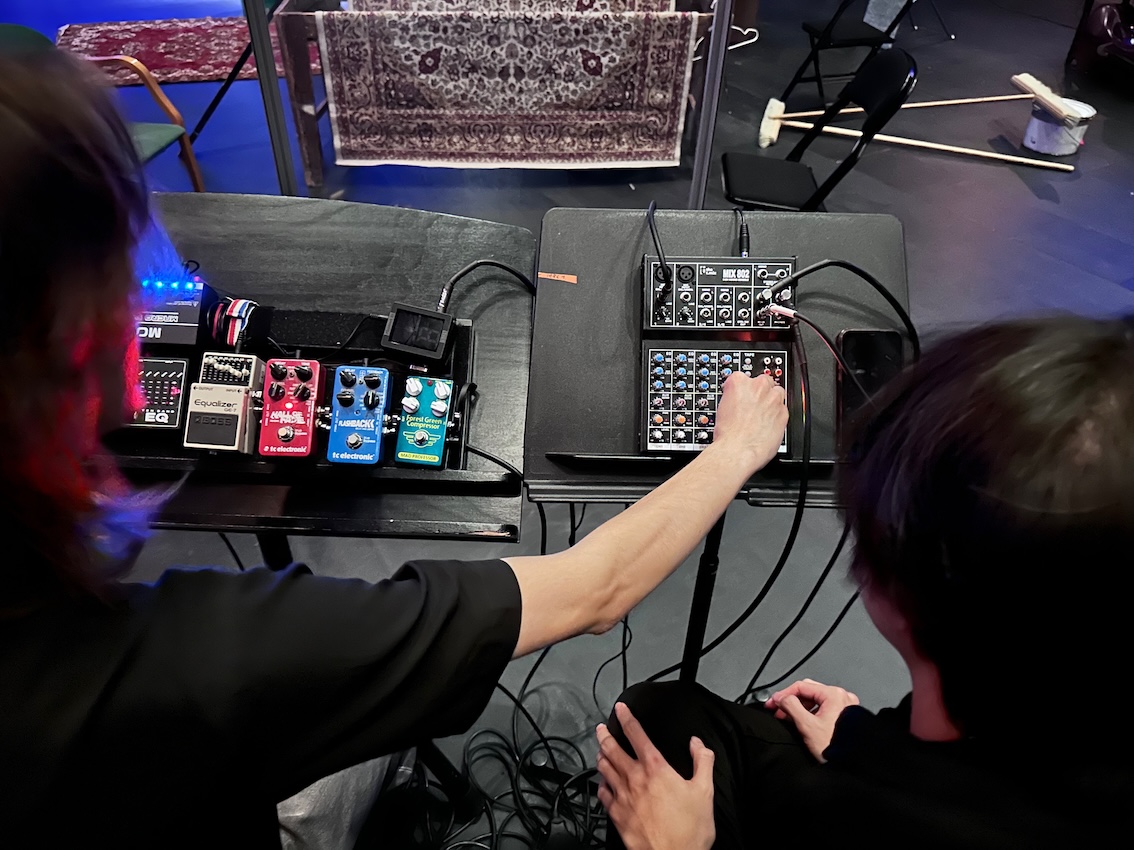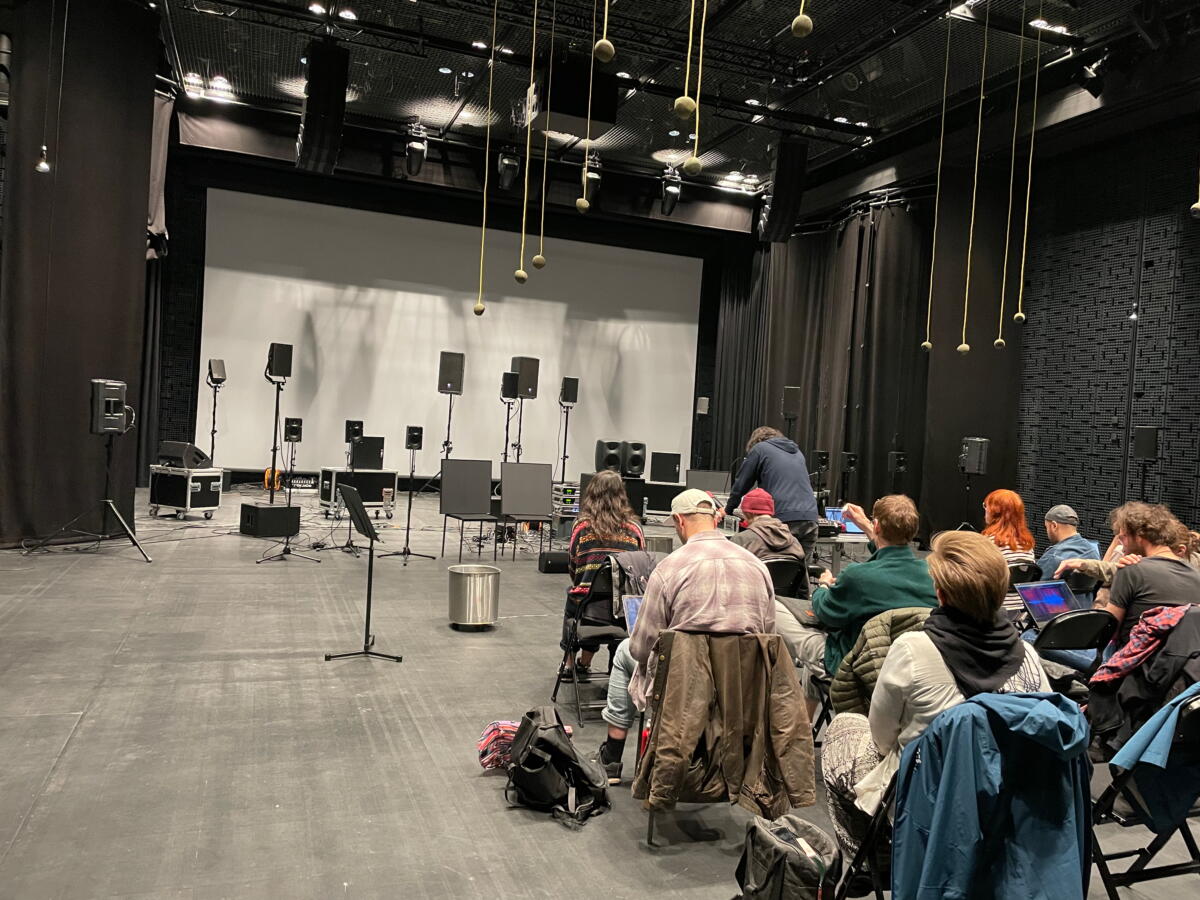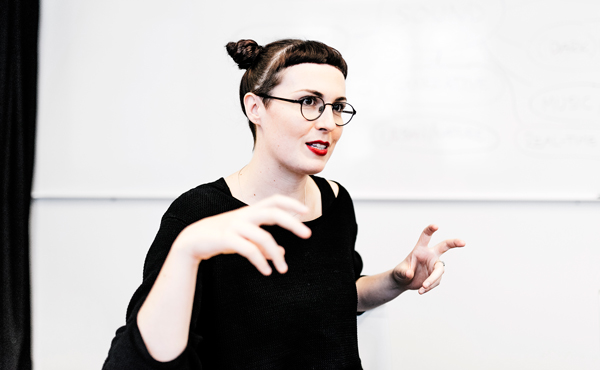The Open University offers inspiring studies in Music Technology and Sound Art & Sonic Arts
Uniarts Helsinki’s Open University studies are a great way to find out more about the fields of art you are interested in. Studying during a gap year gives you better chances of being admitted to the university. The path studies in Music Technology even allow you to advance straight to level three of the Uniarts Helsinki application process.

Uniarts Helsinki offers path studies in Music Technology. After completing the 28 ECTS offered at the Open University, students advance directly to stage three of the degree programme application process in Music Technology in 2027. If they are admitted, the 28 ECTS credits can be included in the degree studies.
The Sound Art & Sonic Arts module does not offer a path to Uniarts Helsinki, but students who study the 15 ECTS module gain a deep multidisciplinary understanding of Sound and Sonic Arts. The studies are offered to all Uniarts Helsinki degree students as well as Open University students, and they are suitable for anyone who wants more profound knowledge about Sound Art and Sonic Art.
When applying, students are asked to note that the Music Technology path is taught in Finnish and English. In the Sound Art module, all teaching and assignments are taught in English.
Music Technology path studies at the university level require a reflective, curious and creative mind
Open University studies introduce the student to diverse fields in music technology. The courses vary from film and game music, computer music programming, and electroacoustic music, to music technology. Students learn to identify and use the tools, techniques and theoretical frameworks of music technology. The courses offered at the Open University are the same as the first year studies of Music Technology at Uniarts Helsinki.

The path studies are designed particularly for those who wish to explore the field of music technology before committing to formal degree studies. They are not intended for applicants who already hold a university degree. The path studies are offered at the Open University every second year: starting in autumn 2025 and the next time 2027.
“The Open University students study side by side with the degree students, so they get a really good idea of the degree studies,” says Alejandro Olarte, the Head of the Music and Technology Study Program. He is an electroacoustic musician who composes experimental electronic art music.
Music Technology department graduates are highly sought after professionals.
“Our courses train students to work creatively in the studio with diverse musical styles and to produce sound for film, games, and other audio-visual media. These skills are in growing demand across the creative industries,” Olarte says.
Students apply to Music Technology path studies at Open University by answering the questions on the application form and sending a link to a previous sample of their work. For more information on how to apply, see the Uniarts Helsinki study guide.
“Our program invites students to engage deeply with music technology—artistically, technically, and intellectually. We value curiosity, critical reflection, and a willingness to explore new ways of thinking and creating.”
Students are not expected to have previous studies or work experience. However, being tech savvy is not enough.
“Mathematics, physics and programming are important and you need to be curious about these, but our interest is more in the people: the artists, the listeners and the institutions. You need to be able to work together with people from different backgrounds and across various musical genres. The aesthetic and artistic side of Music Technology is very important. Our students should not shy away from critical thinking, writing, reflection, or artistic debate. This is creative work,” Olarte says.
It takes a year to complete the Music Technology study path studies at the Open University. The studies require the student’s active attendance and the possibility to participate in the face-to-face teaching. Working full time while studying this module may be challenging.
Uniarts Helsinki offers wonderful possibilities for group work and networking across the different fields of art.
“You can work with many kinds of musicians, visual artists and performance artists. You can grow together into artists. We believe in being present and working together as a group and learning from each other’s experiences. Coffee breaks are very important too,“ Olarte smiles.
The interdisciplinary Sound Art & Sonic Arts module is suitable for students with a broad interest in sound
The 15-credit Sound Art & Sonic Arts module (SAMA) consists of four courses throughout the year. This minor studies module is open every year in the autumn, and students can apply for individual SAMA courses every semester. It takes one academic year to complete the module, consisting of one larger and one smaller course each semester. The SAMA module is suitable for gap-year students, and many students work full-time jobs while taking it.
“The goal of this module is to give students a little taste of everything: a solid theoretical background of sound art, space to engage other students, workshop time, and a solid introduction to technology basics. The aim is to set prospective degree students up for a good head start in working with sound in their creative practices in the future,” explains Ava Imogen Grayson, lecturer in the Sound Art & Sonic Arts module.

SAMA is a place for students to expand their ideas of how sound can be used in the arts, beyond traditional ideas of music and film sound.
“The studies are about sound art as a field in its own right, adjacent fields that sound studies have developed from, and approaches to sound and listening outside of music contexts. Indirectly, our theoretical approaches also touch on topics like ecology, post-colonialism, and diversity.”
Open University students are selected for this module based on a motivation letter explaining student’s interests, studies, hobbies or work experience and expectations, and reasons why they want to study the SAMA module.
“Intense curiosity and the willingness to engage are the best skills a SAMA student could have! SAMA courses are for students who do not necessarily have training in music or sound editing, which means that we start where the students are in their technical and theoretical knowledge. Sometimes, the course materials are quite demanding, but we help our students to understand them,” Grayson says.
Sound Art and Sonic Art studies require the student to be present at the university each week. Open University students study side-by-side with degree students. Some of the SAMA Open University students end up applying to Uniarts Helsinki degree programs: for example, Music Technology, Sound Design studies, or Time and Space Arts.
“It is important for the students to work together as a group and to get to know each other. We want to find ways of discussing topics with others across disciplines, and from many levels of expertise. Some students have theatre backgrounds, while others come from fine arts and music. Everyone has different backgrounds, and they are all here to learn,” Grayson concludes.
The application period for Music Technology and SAMA Open University studies is open until 18 August 2025.
Learn more about the music Technology path studies
Learn more about SAMA module
Text: Päivi Brink